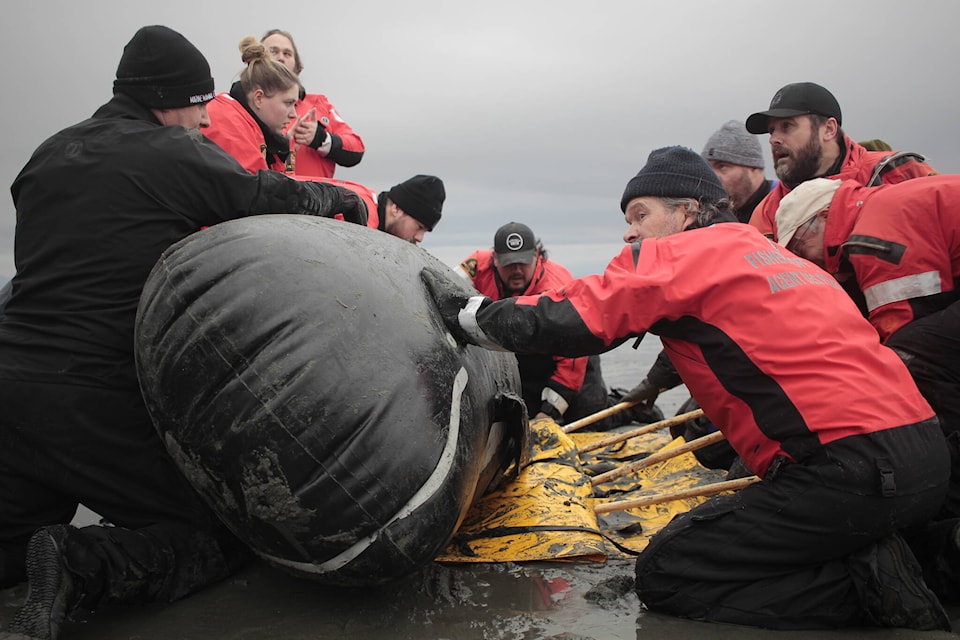Though the whale wasn’t real, the skills learned by DFO Officers on Stories Beach, just south of Campbell River, on the morning of Nov. 8 were.
The officers were learning how to rescue a beached whale. The training was part of a larger program of cetacean rescue and protection training North Island officers were undertaking this week. The training, facilitated by Paul Cottrell from the B.C. Marine Mammal Response Network, gave the trainees a chance to use real-world equipment and see what it feels like to actually rescue a beached whale.
For passers-by, the scene looked a lot like the real thing. A large, 1,500-pound whale dummy was sitting on the beach with a crowd of conservation officers around it. That kind of thing can attract attention. However, it was only a scenario, and not the real thing.
”The scenario today, is that a killer whale has come in trying to snack. It’s a Bigg’s Killer Whale or transient,” said Cottrell. “It tried to grab a harbour seal and actually got trapped up on the beach. So it’s in peril, and our team has been able to mobilize really quickly … It’s basically the weight of a juvenile killer whale. We’re making it as realistic as possible.”
“Over the past few years, we’ve been able to buy some equipment … and having this equipment, you need to be able to know how to use it,” he said. “Unfortunately … we get a lot of live whale strandings. “
Cottrell said there are equipment caches up and down the coast, giving DFO officers easy access so they can respond quickly. The other side of having the equipment is knowing how to use it.
“When you do get a live stranding like this gravity is is not not the friend of these animals,” he said. “It’s so important with anything like this that you’ve gone through the process of using it because you can imagine if we if next week we had a call and we hadn’t used that equipment for three years. It’s a little more challenging.”
To rescue the whale, officers dug a trench along one side of the side of the whale. They then pushed a sling underneath the whale, rolling it to the side in the process for easier access. The hard part was pulling the sling under the 1,500 pound bulk of the whale’s body. From there, they attached and inflated the pontoons, and lifted the whale to take it out to sea. At that point, it is not just a matter of letting the whale go. Cottrell explained that the whale would feel the same as if a person had been standing on their head for hours, with all of its blood pooling near the bottom of its body. The rescuers have to hold the whale for at least half an hour to allow it to recover. However, the length of time is dependent on the whale. Cottrell said that if it feels ready to go, it will let the rescuers know.
The training also simulated a shallow water rescue, which in some ways is easier because the whale is semi-buoyant and rescuers are able to install the sling quicker.
DFO Fisheries Officer Kirsty Walde said that the quick response is key.
“This is a great example of a scenario, but luckily it is just a scenario,” she said. “We encourage people to use the observe, record, and report 24-hour hotline at 1-800-465-4336.”
People can also report beached whales or other whales in distress by email at D. More information can be found on the DFO website.
Walde said the team had been out on the water on Tuesday learning how to help entangled whales. That includes attaching satellite transponders to be able to track entangled whales. Later on Wednesday, they were heading out again to train on oil containment response, which involves setting up a sonic barrier to keep marine life away.
RELATED: DFO to hold beached whale drill south of Campbell River
Increase in humpback-boat collisions on B.C. north coast concerns advocates
